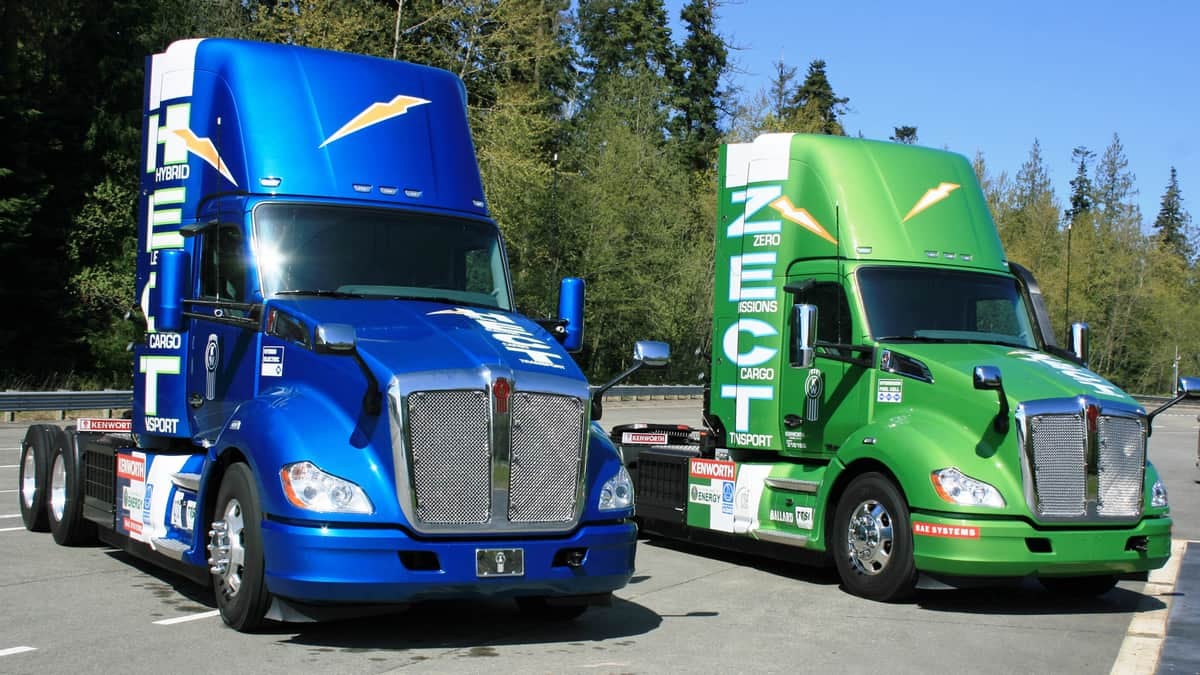The California Air Resources Board (CARB) this week released a stricter version of its electric truck sales standard, a controversial rule that if adopted would require truck manufacturers to sell a certain percentage of zero-emission trucks in California each year.
CARB’s original proposal would have required about 4% of these trucks to be electric by 2035. Under the new version of the standard, called the Advanced Clean Truck rule, at least 20% of trucks on the road would be electric.
The board decided to increase the percentage requirements after a coalition of community and environmental activists complained the original mandate was not strong enough to maintain healthy air quality.
“CARB’s decision is a big step in the right direction,” said Dr. Jimmy O’Dea, senior vehicles analyst at the Union of Concerned Scientists, in a statement. “This is good news for communities that breathe dirty air and for truck owners who want long-term savings on fuel and maintenance.”
The rule is open for public comment until the end of May, and a final vote from the board is tentatively expected in June.
Trucking associations have expressed mixed opinions about the sales mandate. Many manufacturers are moving in the direction of electric truck production and as a result support the standards as long as the state provides sufficient incentives to fleets to purchase the vehicles.
In an interview with FreightWaves last fall, John Mies, a corporate communications lead for Volvo Trucks, said the original equipment manufacturer is “confident in [its] ability” to meet CARB’s timeline for having a competitive electric truck on the market.
But he qualified that statement by saying the success of the electric truck sales standard “will depend to a large degree on having sufficient purchasing incentives in place in the early days of market adoption, and on ensuring that the necessary charging infrastructure is funded and in place.”
Other groups, long opposed to the regulation, have called on CARB to delay rulemaking, citing the economic havoc wrought by the coronavirus pandemic. In a March 23 letter obtained by FreightWaves, Jed Mandel, president of the Truck & Engine Manufacturers Association (EMA), called on CARB to “take account of the incredibly adverse impacts on manufacturers that have occurred, and that continue to evolve, as a direct result of the COVID-19 crisis.”
The impact of the pandemic on engine and vehicle manufacturers “is still unfolding, but is severe,” Mandel wrote, and the outbreak “must result in CARB delaying and/or significantly modifying its current plans for … the … Advanced Clean Truck rulemakings.”
The California Trucking Association could not immediately be reached for comment.
But the updated standard does contain provisions that respond to one of the association’s primary complaints: that the fleet reporting requirements included in the sales mandate were too onerous.
The changes would limit required reporting to vehicle owners and brokers, eliminate reporting facility-based information along with weekly truck trip counts, and lower the vehicle count threshold to fleets with 50 or more trucks and buses — rather than the originally proposed 100 vehicle fleet size.
The release of the new rule comes as new data shows that air pollution may aid the transmission of COVID-19, and lead to increased mortality rates.
Transportation-related air pollution has declined dramatically as a result of the coronavirus pandemic, but experts say the decline is temporary and will reverse as traffic counts return to normal. According to CalTrans, the state’s transportation agency, vehicle miles traveled by heavy-duty trucks from March 6 to April 2l dropped by a third, from 1.8 million to 1.2 million.
The Advanced Clean Truck rule assigns electric truck sales mandates based on vehicle categories. Here are the latest targets:
- First-year (2024) goals
- 5% of Class 2b-3 sales.
- 5% of Class 7-8 tractor (semi) sales.
- 9% of Class 4-8 straight truck sales.
- Roughly 4,000 zero-emission trucks on California’s roads by year’s end.
- 2030 goals
- 30% of Class 2b-3 sales.
- 30% Class 7-8 tractor (semi) sales.
- 50% of Class 4-8 straight truck sales.
- By 2035, this policy could result in roughly 17,000 zero-emission tractor semi-trucks on California’s roads.











